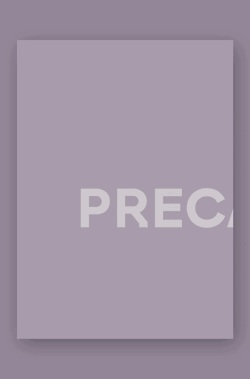
HYBRIDS I. High-Rise Mixed-Use Buildings
a+t 31
ISSN 1132-6409
2008
English/Spanish (23.5 x 32 cm)
Bilingual: English/Español 168 Pages
Printed version: 25.00 €
Online version: 14.00 € How to read the online versions
1 copy available
Choose version
- Printed version: 25.00 €
- Online version: 14.00 €
- How to read the online versions
Destination
Choose your country to calculate the shipping costs
You can also access this publication by subscribing to a+t Online Library
 a+t 31. HYBRIDS I is the first issue of the new a+t series related to hybrid buildings. It is a visual analysis of the programs of these complex buildings and its insertion in the territory.
a+t 31. HYBRIDS I is the first issue of the new a+t series related to hybrid buildings. It is a visual analysis of the programs of these complex buildings and its insertion in the territory.
The analysis that a+t does on vertical hybrid buildings is based on the identification and comparison of three concepts on a selection of 12 prototype projects: programme, section and land use.
The relationship between height and use clearly expresses the urban vocation of the project, its openness to the city, its capacity to share the privilege of height and its social permeability. The section of a hybrid is also, according to Rem Koolhaas, a piece of urban fabric that rises up. In this sense, we wished to confront the urban weft with the section, to compare the intensity of uses with the density of the fabric.
The programme is broken down into a bar of uses and a field of vertical representation. On this field the uses of each building are distributed until 100% of the built surface is completed.
Based on the chosen projects, the possibility to integrate very different uses in one building has been observed. The tendency of planners to avoid mixing uses in favour of segregation is contested by this collection of projects where variety and intensity of uses, both public and private, in a unique development.
The analysis of the section shows the location of uses in the section and allows the comparison of tendencies regarding the placement of public and private spheres.
Insertion into the context is analysed from different scales:
- territorial scale, with population density data and a map with a scale of 1:500,000, to establish the area of economic and social influence.
- urban scale, with the mark inserted in the orthophoto with a scale of 1:5000, to confirm the adaptation or imposition to the weft, connection to the surrounding fabric, land use and edificability.

... A large number of current projects–particularly speculative ones– require multiple functions to be housed together. The concentration of various activities into one structure, as Steven
Holl has written, places pressures on the architecture and has a capacity to ‘…distend and warp a pure building type’ (1).
The current boom in high density buildings has in part been fed by exploding economies, astronomical rises in land value and the rise of emerging economic zones, in particular China, over the last twenty years. The increasing tendency among designers in dealing with this problem has seen the re-emergence of the hybrid building, in preference to a ‘sum of all parts’ mixed use solution, a level of concentration and hybridisation is increasingly understood as a way of activating the building, its individual uses and the surrounding urban fabric...

... Modern architects thought of the skyscraper as associated with the organization of work, with the office. In fact, the prototypic skyscraper of modernity is the expression of such organization; a optimized arrangement for archiving and connecting workers that archive and connect data. This reification of bureaucracy, without and pejorative connotation, was symbolically interpreted in steel and glass rectilinear prisms, artificially climatized, ordered in rings around nodes of communication. Buildings as the Seagram Building in New York gave the definitive and everlasting shape to this conception. That was Modernity with capital M: the triumph of organization, the beauty of organization. Today the skyscrapers under construction are manly located in Asia. They are residential buildings with concrete structures and natural ventilation...
-

a+t 33-34
HYBRIDS III. Residential Mixed-Use Buildings
39.00 €
> See more
-

a+t 32
HYBRIDS II. Low-Rise Mixed-Use Buildings
25.00 €
> See more
-

THIS IS HYBRID
An analysis of mixed-use buildings
49.00 €
> See more
-

a+t 31, 32, 33-34
HYBRIDS SERIES. Online version
> See more
-

50 HYBRID BUILDINGS
Catalogue on the art of mixing uses
26.00 €
> See more




















 I've read and agree to
I've read and agree to 


